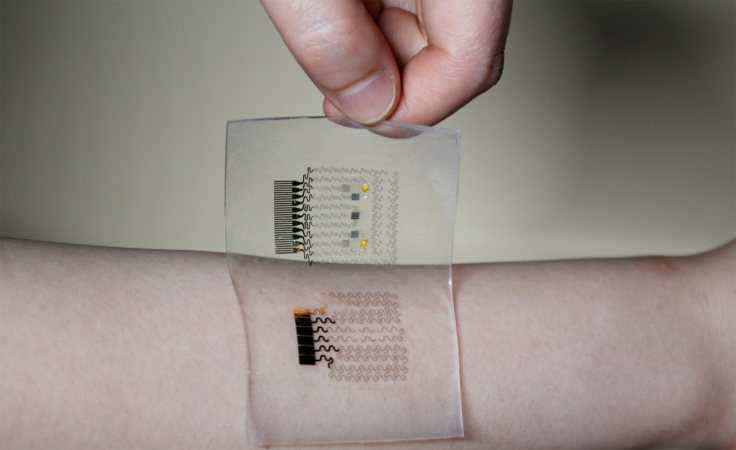Diabetes: Graphene combined with gold to create wearable patch that delivers drugs

'Wonder material' graphene has been combined with gold to create a potential treatment for diabetes. Scientists created a transparent wrist patch which proved successful in controlling diabetes during trials on mice.
The research published in Nature Nanotechnology describes a potential answer to invasive and uncomfortable diabetes treatments. Researchers have been trying to find alternatives to a finger-pricking device for testing blood sugar, and insulin injections for correcting glucose-levels.
Scientists from the the Center for Nanoparticle Research, in Seoul, have come up with a possible answer with a patch that can easily control blood sugar. Their patch tracks glucose levels in the users' sweat, and releases a drug when the body needs it.
How does the patch work?
The scientists had the idea of using graphene for the patch as it is flexible, soft and very thin. However, graphene cannot detect pH, ions or biomolecules – key to reading glucose levels from sweat. Therefore, the researchers added a gold mesh to the patch, which can help read this information easily.
Wonder material - Graphene
Graphene is a group of carbon atoms, shaped into a honeycomb. It is just atom thick, and is 200 times stronger than steel.
The material - dubbed 'wonder material' - has helped in breakthroughs for a new generation of smartphones, electric cars, and potentially fuel-free spacecrafts.
The entire patch was fitted with a number of sensors for detecting glucose, as well as pH, temperature and humidity.
When the patch senses that glucose levels in sweat is too high, it automatically releases the drug metformin – a diabetes drug – into the skin. The drug is hidden inside microneedles in the patch, ultimately being dissolved by itself when the drug is needed.
It was tested on 18 mice which have tested positive for Type II diabetes. The results showed clear evidence that the patch worked, releasing drugs when required and reducing glucose levels for several hours.

How close is it to becoming a reality?
"The patch can be reused 10 times and work for a week," Dae-Hyeong Kim, co-author of the research, told IBTimes UK. "It can be reused multiple times but the drug-containing microneedles should be replaced every time after the use."
The researchers aim to take their invention to human trials next, but they admit more research will have to be carried out before that point. That includes scaling up the amount of drug delivered to the user; a human will need a higher dosage of metformin than mice.
"We are now trying to improve the long-term reliability, the number of times for reuse, and the cost-competitiveness of the system," said Kim. "It will take several years to build on the mass-production line and get approval from the government."
In an accompanying News & Views article, Richard Guy, from the Department of Pharmacy & Pharmacology the University of Bath, also said it is highly unlikely the current design of the patch could be used on adults "without an unfeasibly large number of microneedles and/or an unacceptably large patch".
"Nevertheless, it is probably safe to say that these issues are already being addressed and that other therapeutic strategies are being identified to complement the significant advances achieved in this work," he added. "Thus, although the holy grail of diabetes management ... is not yet at hand, Kim and co-workers have certainly moved the field closer to this coveted prize."
© Copyright IBTimes 2025. All rights reserved.






















